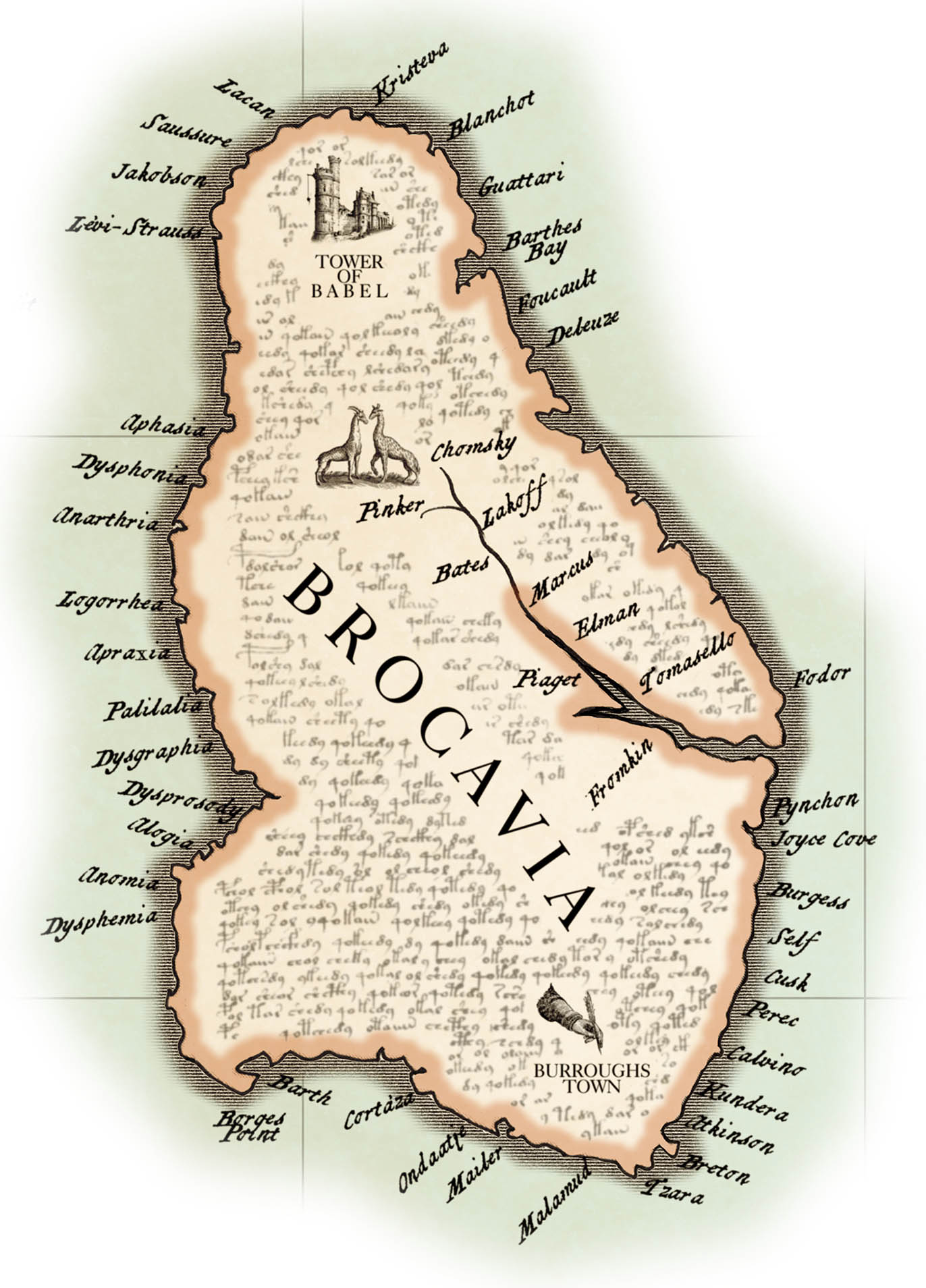Click on the map to learn more
Named after Broca's area found in the left hemisphere of most right-handed people. It's involved in the production and comprehension of language.
Similar neural structures are also found in the great apes, suggesting the roots of language may have evolved from non-linguistic sequences of gesture.
Cognitive Scientists
The uniquely human nature of language has attracted a lot of scientific interest. Whether the ability is truly uniquely human, and based on specific evolved neural architecture or not is the nature of ongoing debate.
Notable researchers in the field include Elizabeth Bates, Jean Piaget and Michael Tomasello. And at the river's source, linguists Noam Chomsky and Steven Pinker
Experimental Authors
We obviously rely heavily on our ability to comprehend and produce language, yet we are also fascinated by writings that challenge our expectations of form and structure. Here I've collected authors who took some of the biggest risks. Centred around Burroughs Town (William Burroughs) I've included avant garde artists Tristan Tzara, James Joyce, Italo Calvino and Thomas Pynchon.
Language Disorders
Damage to the language regions of the brain can have bizarre effects, yet they reveal interesting insights into the neurological underpinnings of language. The various forms of aphasia impact the ability to comprehend of produce language. Logorrhea, characterised by the constant need to talk, Palilalia, characterised by the involuntary repetition of syllables, words, or phrases, or Dysprosody, also known as 'psuedo-foreign-accent syndrome'.
Tower of Babel
The Tower of Babel is a Hebrew myth explaining the origins of different languages. According to myth, we once all spoke the same language, but the peoples of Shinar attempted to build a tower tall enough to reach Heaven. God didn't like this, and cursed them by forcing them to speak different languages and spread them around the globe.
Literary Theorists
Writing about writing is a popular pass-time amongst academics. Here we find the theorists, Saussere, Foucault, Deleuze and others.
It was Roland Barthes who declared The Death of the Author, claiming that a literary work should be considered apart from its creator.
The Voynich Manuscript
This continent is textured with The Voynich Manuscript - a 15th Century manuscript written in an unknown writing system. As such, it has become a cornerstone in the history of Cryptography.

